The Goat’s Beard plant, also known as Bride’s-Feathers or Eastern Goat’s Beard, is a perennial that combines elegance and resilience. Belonging to the Rosaceae family, this plant shares traits with familiar garden favorites like spirea and meadowsweet, and its feathery plumes resemble the graceful astilbe. Despite its peculiar name, Goat’s Beard is admired for its striking beauty and adaptability.
Native to North America, Eurasia, and regions like North Carolina, this plant has a rich history dating back to Roman times when it was named by Pliny. Its origins extend to Japan, showcasing its ability to thrive in diverse climates. Hardy in USDA zones 3 to 7, Goat’s Beard is a robust addition to any garden, making it an excellent choice for both novice and experienced gardeners.
| Common name | Bride’s-feathers, Eastern Goat’s Beard, Goat’s Beard |
| Botanical name | Aruncus dioicus |
| Family | Rosaceae |
| Species | dioicus |
| Origin | North America, Eurasia, North Carolina |
| Life cycle | Perennial |
| Plant type | Herbaceous Perennial |
| Hardiness zone | 3, 4, 5, 6, 7 |
| Sunlight | Full Sun |
| Soil condition | High Organic Matter |
| Soil ph | Acid |
| Drainage | Moist but Well-Drained |
| Growth rate | Medium |
| Spacing | 3 ft. – 6 ft. |
| Harvest time | Summer |
| Flowering period | Spring |
| Height | 3 ft. – 6 ft. |
| Flower color | Cream, Tan |
| Leaf color | Green |
| Fruit color | Brown, Copper |
| Fruit type | Follicle |
| Leaf benefit | Showy |
| Flower benefit | Good Cut |
| Garden style | Butterfly Garden |
| Uses | Naturalized Area |
I. Appearance and Characteristics
Aruncus dioicus, known as goat’s beard, buck’s-beard or bride’s feathers, is a flowering herbaceous perennial plant in the family Rosaceae, found in Europe, Asia, and eastern and western North America. It is the type species of the genus Aruncus. It has alternate, pinnately compound leaves, on thin, stiff stems, with plumes of feathery white or cream flowers borne in summer.
The Latin specific epithet dioicus means “having the male reproductive organs on one plant, and the female on another”.
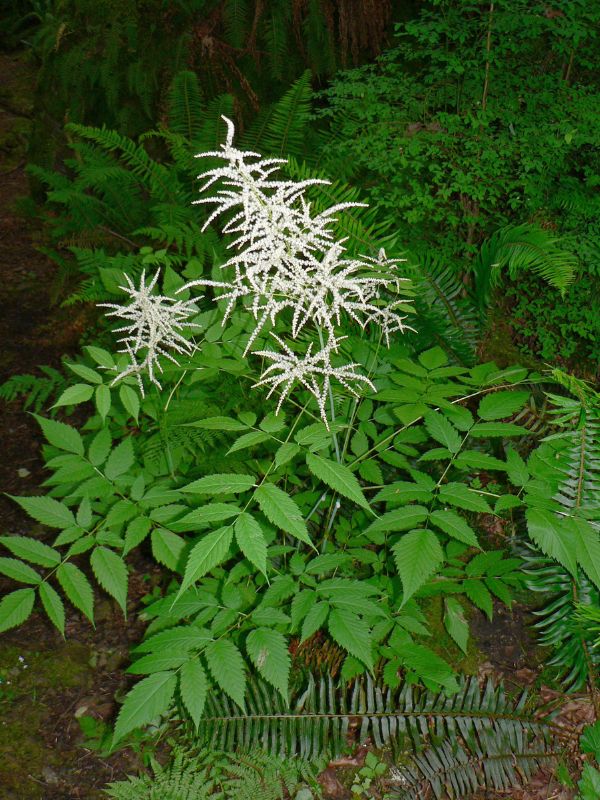
The species is from 1.2 to 1.8 metres (4 to 6 ft) tall, with compound leaves consisting of 3 or 5 leaflets. Very small, 5-petaled white or cream flowers are displayed in showy panicles, blooming in late spring to early summer. Male and female flowers are borne on different plants. The flower spikes rise high above the plant, adding to the showiness of the species. Plants with male flowers have a showier bloom than the ones with female flowers.
II. How to Grow and Care
Sunlight
Goat’s beard can grow in full sun in the cooler parts of its growing zones, as long as it has enough moisture. In warmer locations, it should be grown in partial shade. And it especially should be protected from strong afternoon sun. Too much sun can result in leaf burn.
Temperature and Humidity
This perennial likes temperate conditions. And it will struggle in hot, humid weather. During heat spells, be extra diligent about providing it with adequate moisture.
Watering
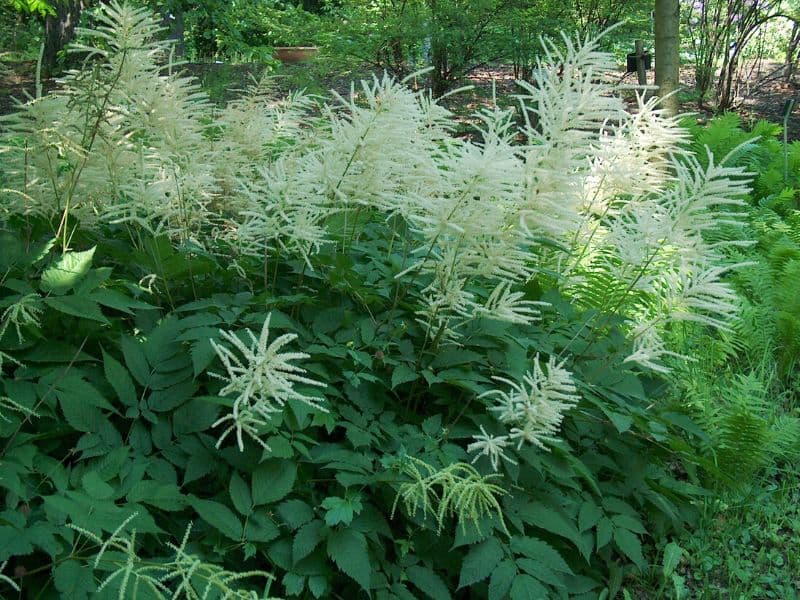
Goat’s beard prefers consistently moist but not soggy soil. Even a brief drought can damage the plant and potentially kill it. If the soil feels dry when you stick your finger about 1 or 2 inches down, it’s time to water.
Soil
This plant loves loamy, organically rich soil. It can tolerate a slightly acidic to slightly alkaline soil pH. When planting, amend the soil with compost and peat moss. Besides increasing soil richness, this also will help the soil to retain more water.
Fertilizing
Because goat’s beard likes fertile soil, mix compost into the soil each spring as new growth begins. This is often all you need for healthy growth. If you have poor soil, you can apply a balanced, slow-release fertilizer in the spring.
Pruning
If you wish to prevent its spreading via seeds, deadhead the plant (remove the spent flowers).
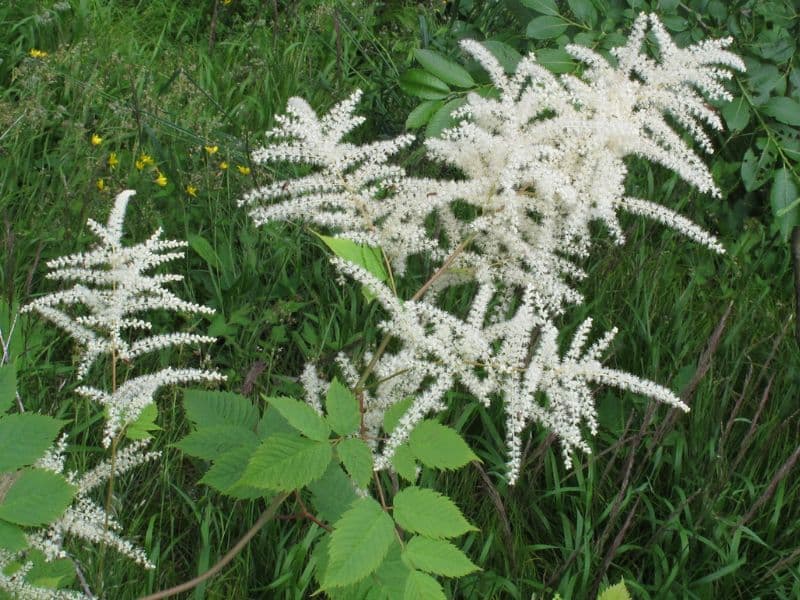
Propagation
Goat’s beard will self-seed in the wild, and trying to germinate seeds is erratic and iffy at best. The most effective way to propagate a goat’s beard is by division. Divide mature plants in the early spring or fall when it’s cool for the best results. Dividing the plants will rejuvenate older clumps of goat’s beard, as well. Follow these simple steps:
- Lift out of the ground a large clump of goat’s beard with its rhizomes.
- With a sterile and sharp garden tool, untangle and cut the heavy roots to create smaller clumps. Make sure each new clump has at least one “eye” or node that can go back into the ground.
- Place divided plants back in the ground about 2 to 3 feet apart so they have room to grow.
Potting and Repotting
Goat’s beard can look lovely in a container. Place the pot in a shady spot to brighten it up. Choose a container that can hold a 6-foot-high plant unless you choose dwarf varieties. Consider a container that will retain moisture, even plastic will do, but the pot should have drainage holes. Container plants typically require more water and that applies to goat’s beard in pots, as well, since they prefer moisture.
Overwintering
Within its hardiness zones, goat’s beard doesn’t require any additional winter protection. The spent flower stalks on goat’s beard can remain on the plant over winter for visual interest. Cut the stems down close to the ground in the late winter or early spring before new growth starts.
Pests and Diseases
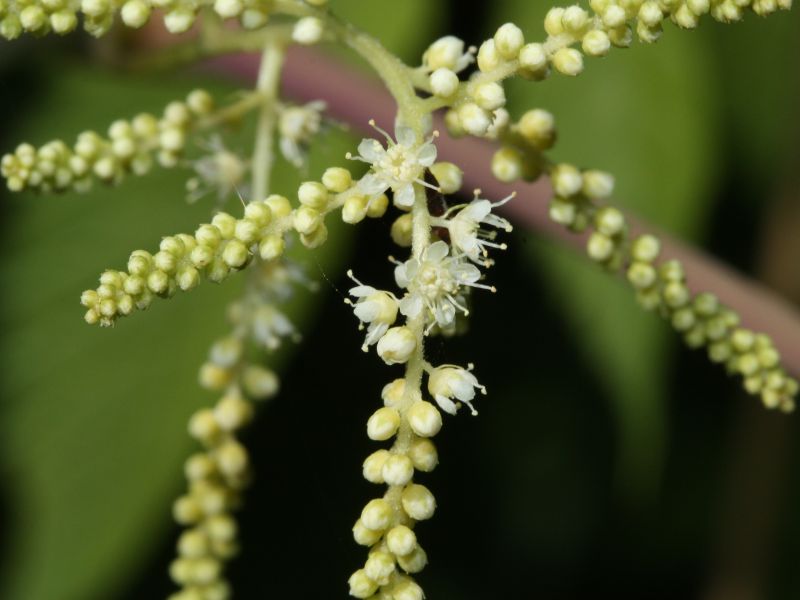
Common Pests
Goat’s beard is a fairly low-maintenance plant and rarely has serious issues with pests or diseases. In fact, while it tends to attract butterflies and birds to the garden, it is resistant both to deer and rabbits. However, be on the lookout for sawflies and caterpillars, which can be controlled with insecticidal soap or using soapy water to wipe off the plants.
Common Problems
Goat’s beard will be one of the most easy-going plants in your garden. But too much sun or under watering can cause issues.
Brown Leaf Edges
Be on the lookout for the rare problem of crispy brown leaf edges. If you notice browning, your goat’s beard may be getting too much sun, resulting in leaf scorch, or the soil is not moist enough. Amend dry soil with organic matter to retain moisture.
III. Uses and Benefits
- Ornamental uses
Goat’s beard grows tall, so it is a good choice in areas where a backdrop for showier plants is needed. It tolerates shade and wetter soils well; this makes it great in a woodland garden or in lower areas near water that don’t get as much sun.
- Medicinal uses
Native Americans in the Northwest used the plant medicinally as a diuretic, as a poultice, and to treat blood diseases, smallpox, and sore throats.
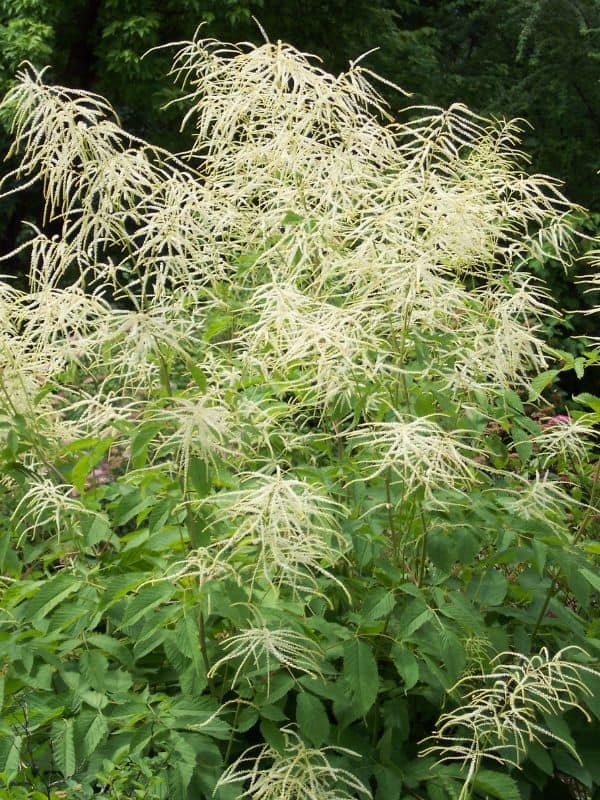
- Culinary uses
In Italy the young shoots are eaten, usually boiled briefly in herb infused water, and then cooked with eggs and cheese. In Friuli it is one of the ingredients in the local home-made soup based on wild greens called ‘pistic’.
Aruncus dioicus var. Kamtschaticus has shown potent cytotoxicity against Jurkat T cells.
IV. Types of Goat’s Beard
There are several cultivars of Aruncus dioicus, and many of them have been bred to be more compact than the main species of the plant. Some examples include:
- Aruncus dioicus ‘Glasnevin’: ‘Glasnevin’ is a compact cultivar that was developed in Ireland. It is slightly shorter than the main species plant, and it has even deeper green leaves.
- Aruncus dioicus ‘Kneifii’: Kneifii goat’s beard only reaches around 3 feet high, making it a good option for small gardens. But it still produces substantial plumes of creamy white flowers.
- Aruncus dioicus ‘Zweiweltenkind’: ‘Zweiweltenkind’ (also known as ‘Child of Two Worlds’) is another compact goat’s beard variety. It only reaches around 3 to 4 feet high, but it is a sturdy plant that can tolerate strong winds.
Find Where to Buy the Best Goat’s Beard (Aruncus dioicus)



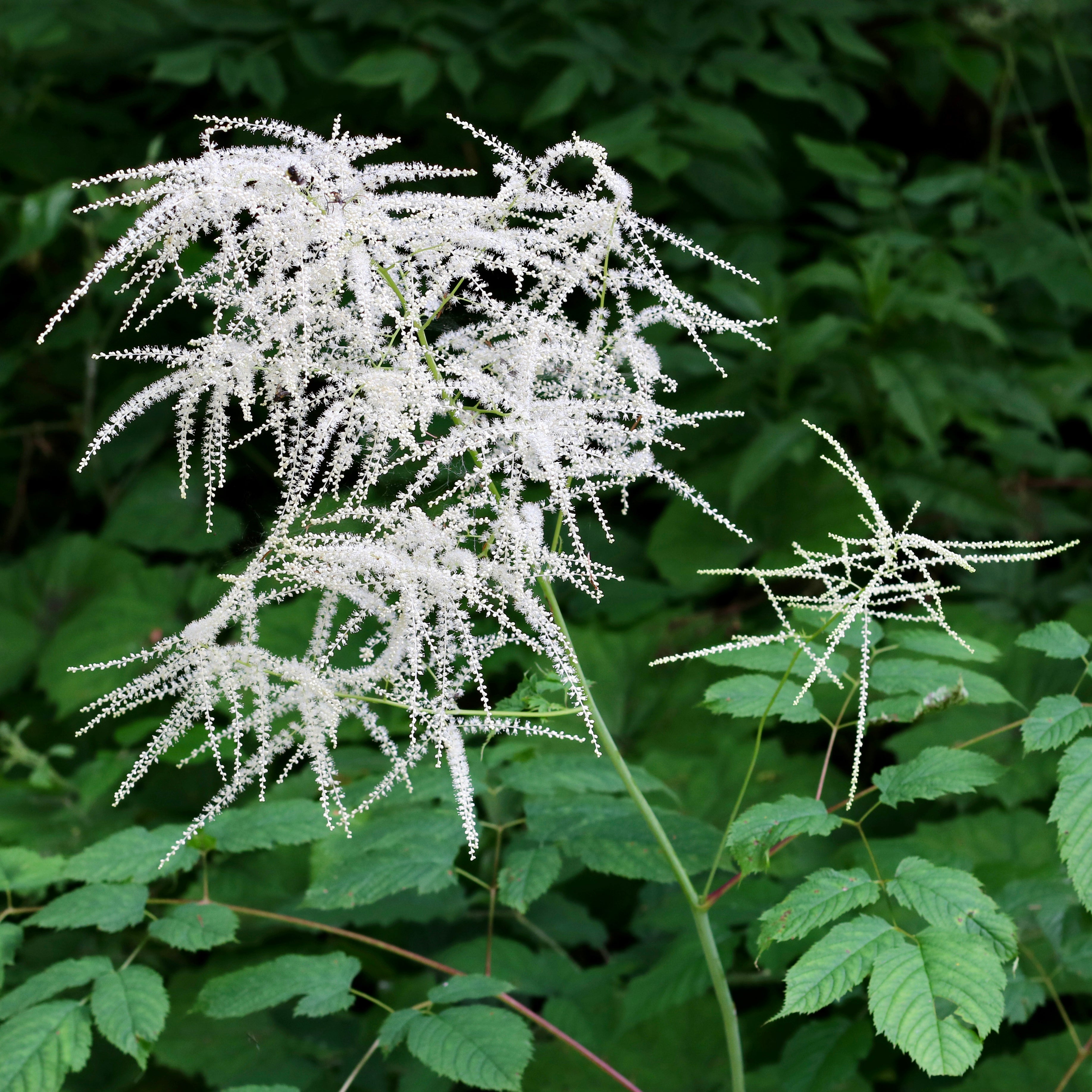



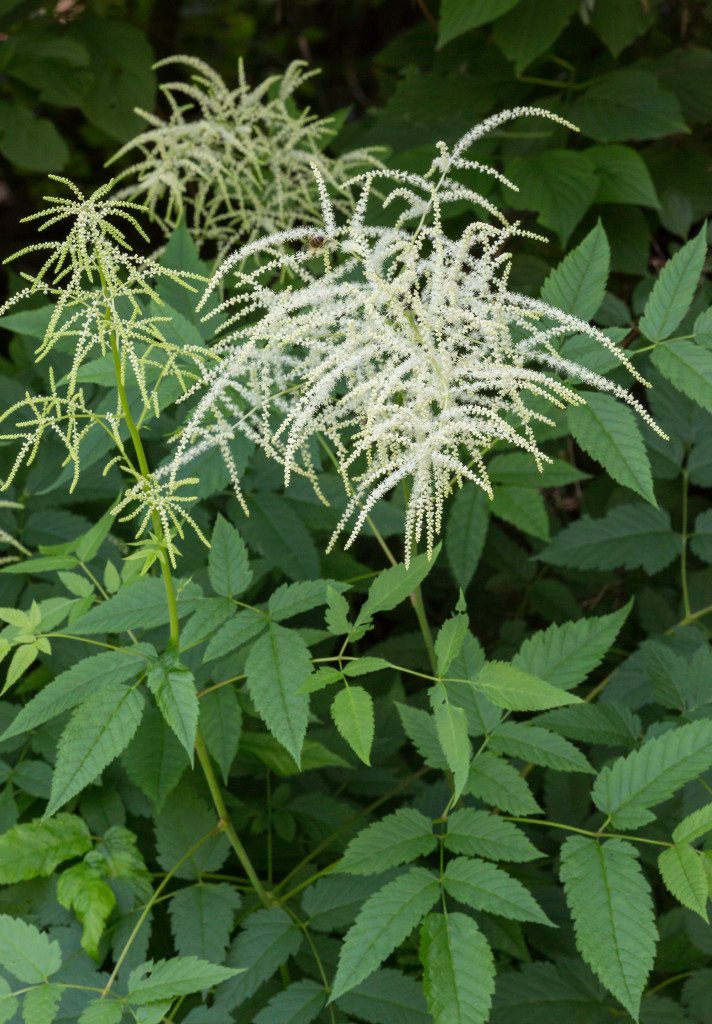

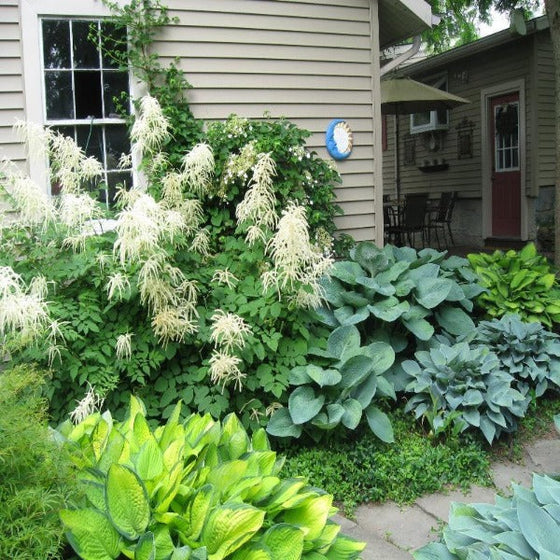



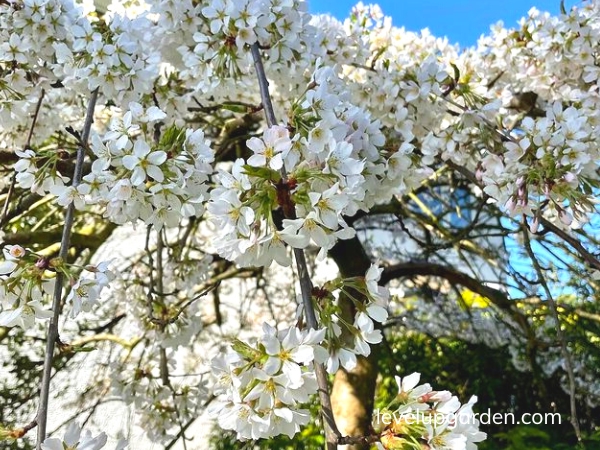
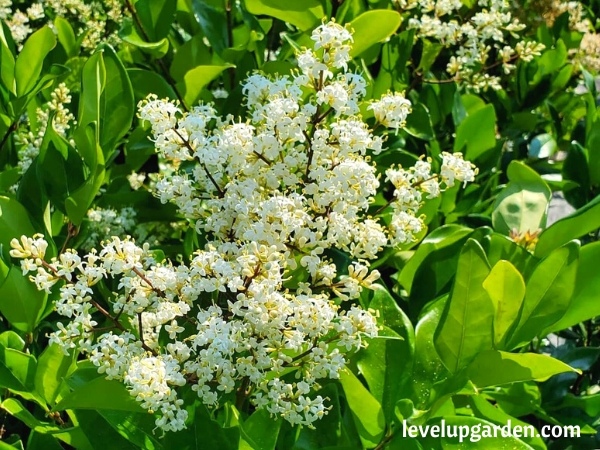

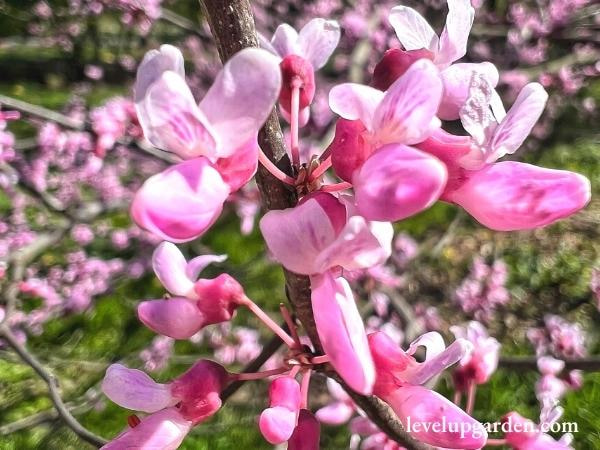
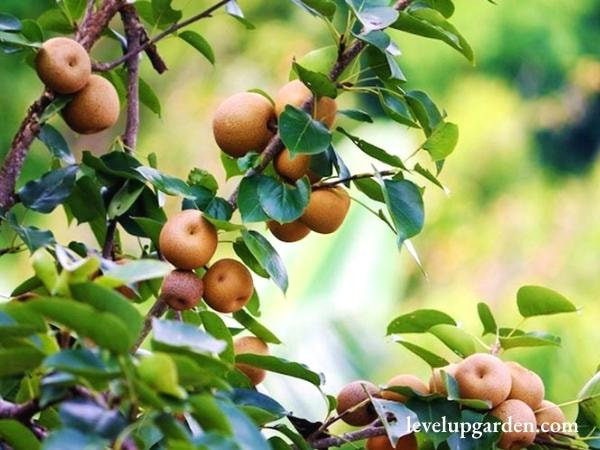
Leave a Reply